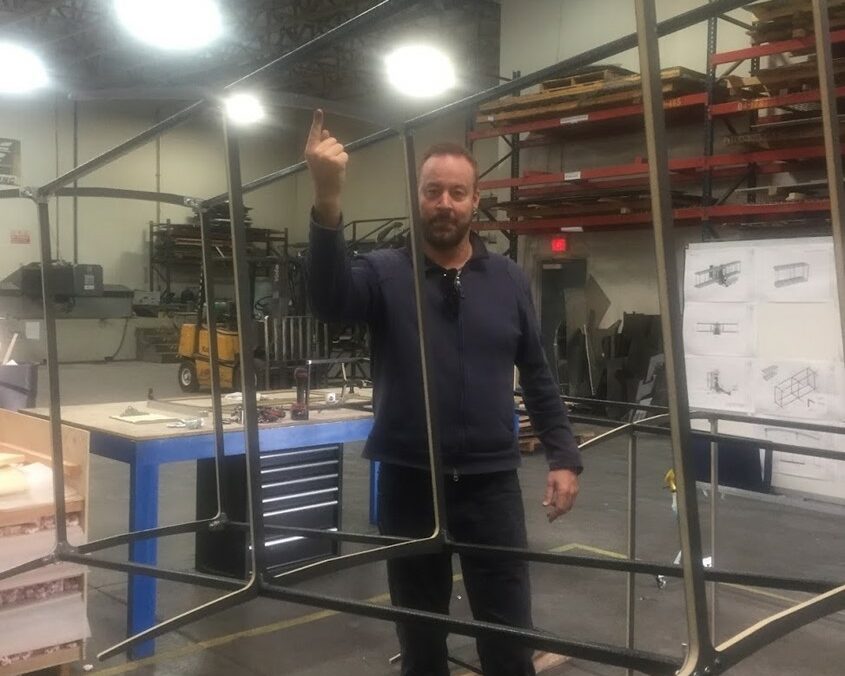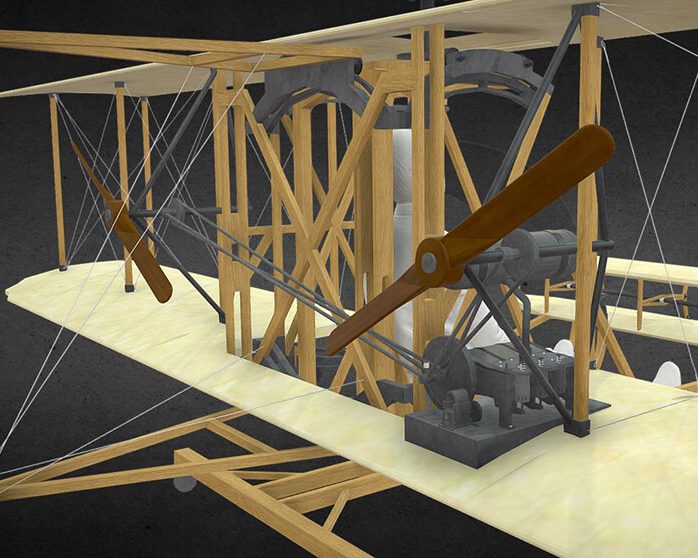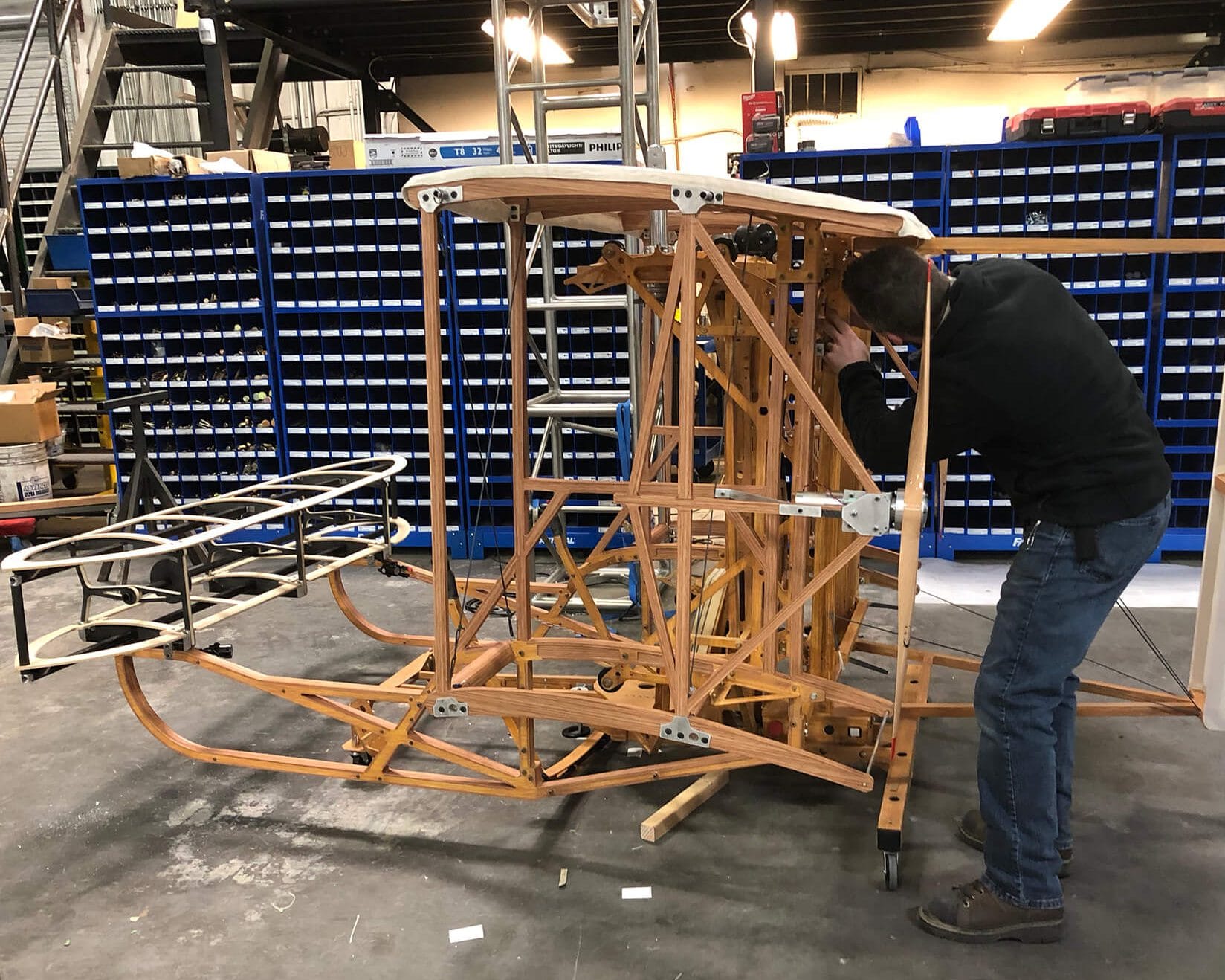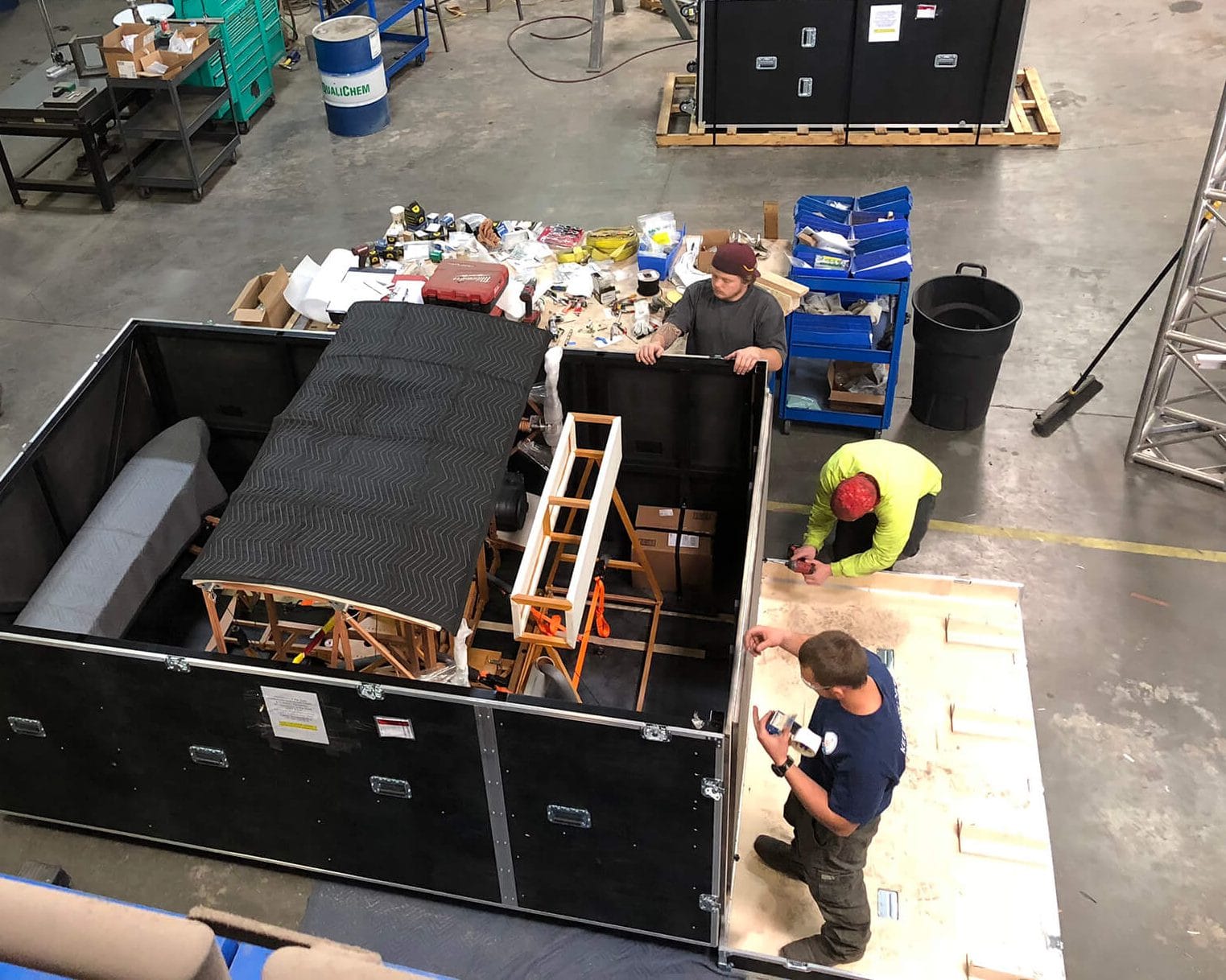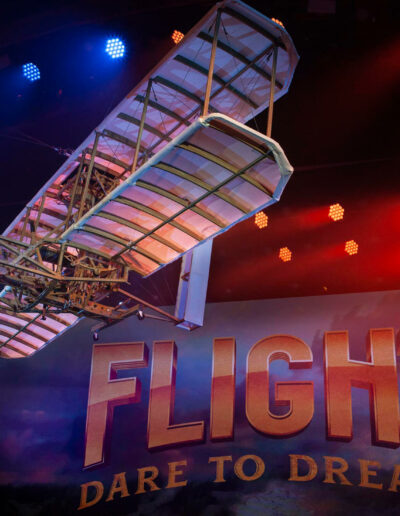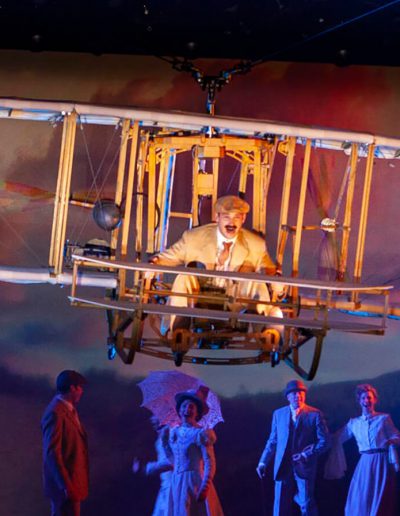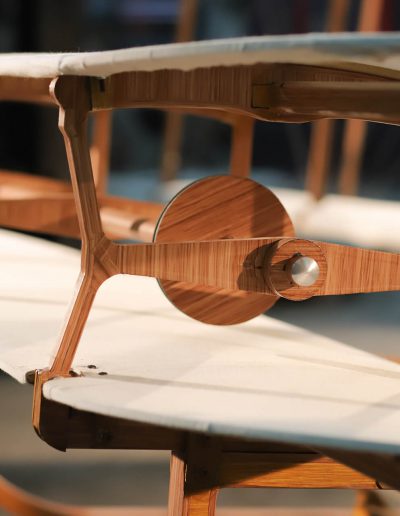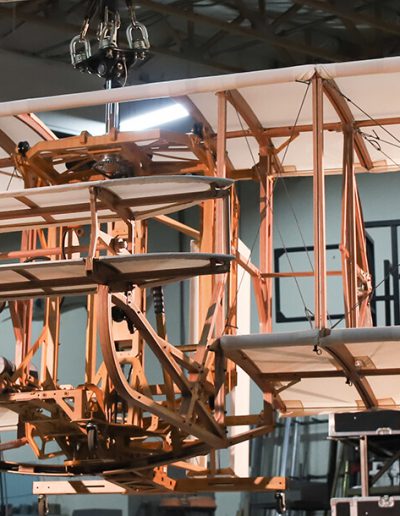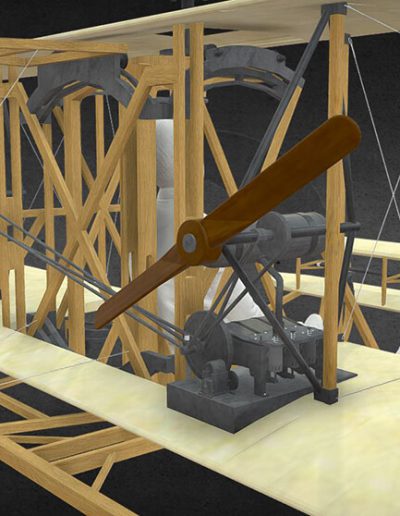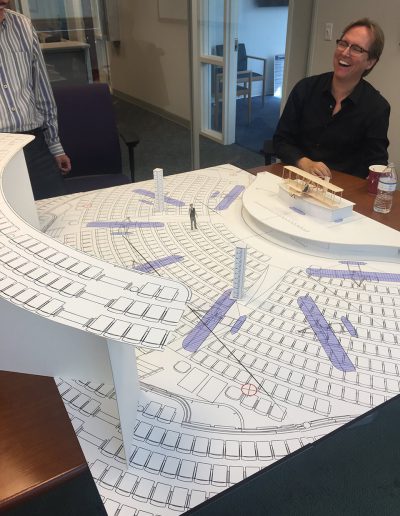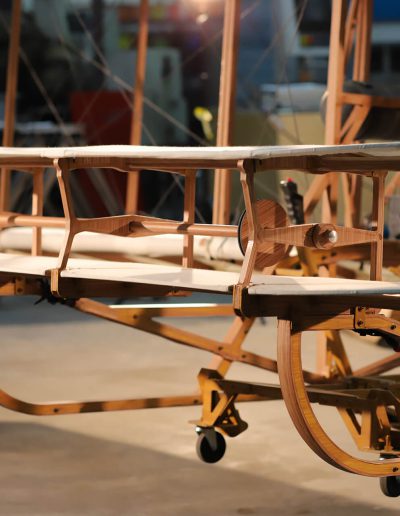Once the concept of the Wright flyer was finalized, EPS worked with AMC Fabrication to select and test different materials for constructing the plane to the correct weight specifications and aesthetic design. Initial engineering models revealed that an all-aluminum frame would exceed the target weight limits, so the team explored working with carbon fiber foam-core sheets and carbon fiber tubing for the wing structure while using structural aluminum for the core and main support of the plane. Though carbon fiber was not a typical material used in the shop, AMC along with EPS’ designers took on the complex task of working with the ultra-light composite. Special bonding, fastening, and machining methods were used for the flyer’s main wing structure. With the addition of a vinyl wrap, the project team recreated the realistic look of wood-grain finish.
For the wings of the flyer, EPS had to strike a balance between the rigid structure of the aluminum and the true-to-life appearance of canvas wings. Attempting to create a stretched fabric cover that wouldn’t droop in the middle and provide the right stability, the designers took inspiration from the original Wright brothers’ craft: stringing fine wire (or in this case, paracord) between the struts. The truss pattern of the paracord gave the nearly 10-foot-long wings extra stability, not only during performances, but also for disassembly, storage, and transport.
After 11 months of development and fabrication, the Wright flyer undeniably impressed the project team during its test runs. Flying by Foy set up a scaled version of the 3D flying system inside their rehearsal studio, offering the Royal Caribbean directors a sneak peek prior to shipping.
EPS designed three custom road cases for the fuselage and the two wings. The road cases were not only used for shipping, but they also accommodated the limited backstage storage conditions. The flyer was shipped to Civitavecchia, Italy where it was loaded onboard Symphony of the Seas and into its new home in the Royal Theater.

